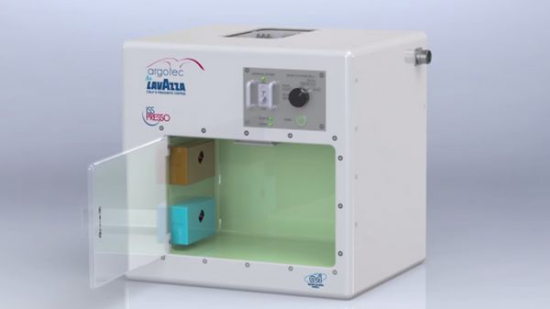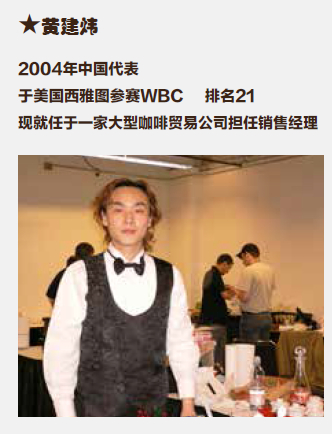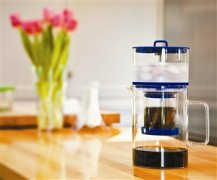Space Coffee Machine and its Crazy Express

If one day, you suddenly receive a coffee machine from the express delivery, it must be a surprise, and if you happen to be "floating" on the International Space Station, it will be absolutely incredible. But it did happen. On April 15, the Dragon spacecraft successfully sent a coffee machine to the International Space Station. As a result, Italian female astronaut Samantha Kristofretti became the first person to use a coffee machine in space.
Someone must be wondering, if you replace this coffee machine with another "payload", could you do more space experiments? For example, by replacing the coffee machine with fuel, the spacecraft may extend its life, or even win an extra chance to bring the dead back to life in a state of emergency. However, there is no if. The reason is simple-some astronauts said that what they miss most in space is a good cup of coffee.
Behind this seemingly entertaining event, what we feel is a strong sense of humanity. at the same time, it is also testing people's view of science.
Once upon a time, our attitude towards scientific exploration, in addition to being connected with "greatness", was often shrouded in grief-the hardship of search, the bitterness of failure, the pain of life that we had to endure in the pursuit of truth, and the joy of success. always fleeting like spray. We do not realize that in the process of creating scientific heroes, we have unwittingly completed the demonization of scientific exploration. After all, the purpose of science is to bring people happiness, not pain. Similarly, countless explorers devote themselves to science not because they have a penchant for suffering, but because they can enjoy the happiness brought about by scientific challenges in the process.
Camus, a French writer, told the world that Sisyphus enjoyed happiness all the time in the process of conquering the summit. This kind of happiness is pure, because it breaks away from the utilitarian "success" and "failure", interprets "gain" and "loss" from another angle, and never gets cold feet for fear of failure.
In fact, Crazy Express, which is responsible for sending coffee machines into space, has conducted a more challenging experiment. After putting the Dragon into orbit, the US SpaceX Falcon 9 carrier rocket, which undertook the launch mission, also tried to return the main body of the rocket and landed vertically on a recycling platform the size of a football field in the Atlantic Ocean. The difficulty of this technology is vividly likened to "making a rubber broom stand upright on the palm of the hand in the strong wind". Once this test is successful, the cost of the rocket will be reduced to the current 1/10.
This is the second time Falcon 9 has tried such an experiment, and it is still "a little short" after all. In the midst of regret, Elon Musk, founder of SpaceX, wrote calmly: "it looks like Falcon landed well." Indeed, you know, just two or three years ago, a recoverable rocket was considered a fantasy. Musk also announced that the new trial will start again in two months.
Elon Musk seems to be using his actions to verify the famous saying of Ulrich Baker, a contemporary German sociologist: "I take risks, so I am." And it is his adventure that is not afraid of failure that has made him the best electric car in the world, Tesla, and is also making his incredible Falcon 9.
On the road of scientific exploration, failure is not terrible, what is terrible is the fear of failure.
It's the same with life.
(source: Guangming Daily)
Important Notice :
前街咖啡 FrontStreet Coffee has moved to new addredd:
FrontStreet Coffee Address: 315,Donghua East Road,GuangZhou
Tel:020 38364473
- Prev

Talking about the champion of Chinese barista
Q1: please share the key to winning the award that year? Q2: has there been any change in your career path since you won the championship? Q3: in your opinion, what changes have taken place in the Chinese coffee market in recent years, especially how does the development direction of boutique coffee affect you? Q4: if you compete again, what do you think is different from the past? What advice do you have for new baristas? A1: first of all, competition
- Next

The artifact of making iced coffee for single dogs
What does an ice drop coffee maker look like? Generally speaking, it is a combination of large-size, multi-section glass pots, but bruer Design Studio in California has designed a more portable Cold Bruer ice drop coffee cup, including a top ice storage part and a transparent ice drop pot, containing coffee powder cans, which are pre-sold for $75 on the official website, and it takes 3-12 hours to make a cup of ice drop coffee.
Related
- A complete list of coffee bean names and their meanings! What is Yejia Shefi coffee? Where is Mantelin coffee?
- What grade does Arida Manor Kaduai coffee beans belong to? What treatment is Arida ASD slow anaerobic sun exposure?
- The milk tea cup becomes smaller?! Overlord Tea Girl launches a new "Return to Yunnan" series
- Accused of selling counterfeit and high-priced coffee beans! Well-known boutique coffee brand "Oukelao" bowed and apologized!
- How to make espresso dumplings? Can I eat coffee and glutinous rice balls together?
- Save the unformed and stagnant powder cakes in one second! What is the problem with stagnant water in the powder bowl of the espresso machine?
- What does hand-brewed coffee stop mean? Why is it not recommended to make coffee by hand?
- Is it normal to smell like coffee? Why does coffee smell like alcohol? What's wrong with the strong smell of cold extract ice dripping ice brewed coffee?
- How to solve the problem that hand-brewed coffee extraction takes too long? Why is the water flowing so slowly when making coffee?
- The main points of making Australian white coffee, the proportion details, how does Australian white properly foam and blend the flowers?

